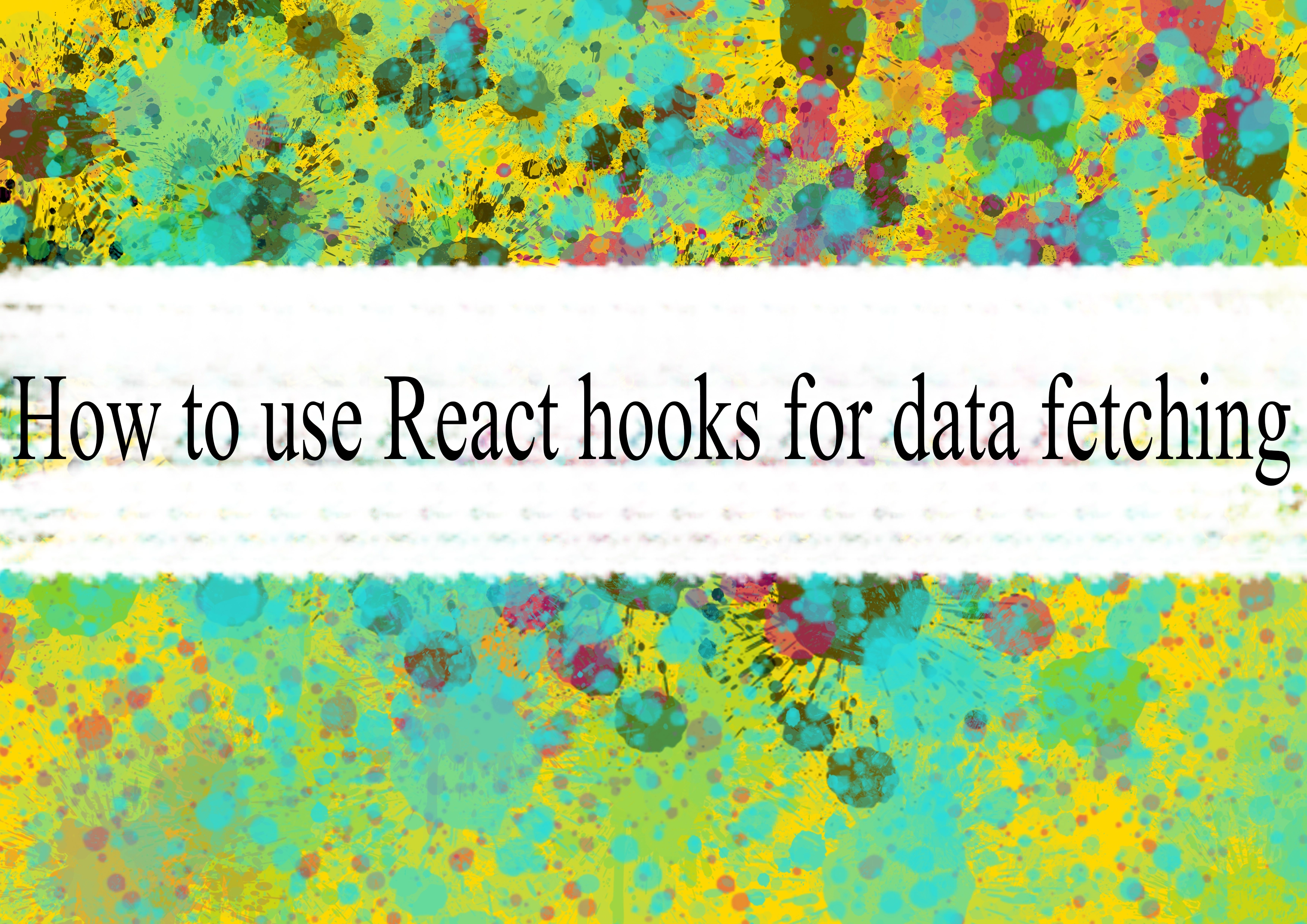How to use React hooks for data fetching

In React, hooks are functions that let you use state and other React features in functional components. useState and useEffect are two commonly used hooks for managing state and performing side effects, such as data fetching.
To use React hooks for data fetching, you can follow these steps:
Import the necessary hooks: Import
useStateanduseEffectfrom thereactlibrary.javascriptimport React, { useState, useEffect } from 'react';Declare a state variable to hold the fetched data: Use the
useStatehook to create a state variable that will hold the data fetched from the API.javascriptconst [data, setData] = useState(null);Use
useEffectfor data fetching: Use theuseEffecthook to perform the data fetching when the component mounts or when specific dependencies change.javascriptuseEffect(() => { const fetchData = async () => { try { const response = await fetch('https://api.example.com/data'); const result = await response.json(); setData(result); } catch (error) { console.error('Error fetching data:', error); } }; fetchData(); }, []); // The empty dependency array means this effect will run once when the component mounts.In this example, replace
'https://api.example.com/data'with the actual URL of the API you want to fetch data from.Render the fetched data in your component: Once the data is fetched, you can use it in your component's render method.
javascriptreturn ( <div> {data ? ( // Render your data here <p>{data.message}</p> ) : ( // Optionally, render a loading indicator while data is being fetched <p>Loading...</p> )} </div> );In this example, it assumes that the fetched data is an object with a
messageproperty. Adjust the rendering logic based on the structure of your data.
Remember to handle errors appropriately, as shown in the catch block, to provide a good user experience even when something goes wrong during data fetching.
-
Popular Post
- How to optimize for Google's About This Result feature for local businesses
- How to implement multi-language support in an Express.js application
- How to handle and optimize for changes in mobile search behavior
- How to handle CORS in a Node.js application
- How to use Vue.js with a UI framework (e.g., Vuetify, Element UI)
- How to configure Laravel Telescope for monitoring and profiling API requests
- How to create a command-line tool using the Commander.js library in Node.js
- How to implement code splitting in a React.js application
- How to use the AWS SDK for Node.js to interact with various AWS services
- How to use the Node.js Stream API for efficient data processing
- How to implement a cookie parser middleware in Node.js
- How to implement WebSockets for real-time communication in React
-
Latest Post
- How to implement a dynamic form with dynamic field styling based on user input in Next.js
- How to create a custom hook for handling user interactions with the browser's device motion in Next.js
- How to create a custom hook for handling user interactions with the browser's battery status in Next.js
- How to implement a dynamic form with dynamic field visibility based on user input in Next.js
- How to implement a dynamic form with real-time collaboration features in Next.js
- How to create a custom hook for handling user interactions with the browser's media devices in Next.js
- How to use the useSWRInfinite hook for paginating data with a custom loading indicator in Next.js
- How to create a custom hook for handling user interactions with the browser's network status in Next.js
- How to create a custom hook for handling user interactions with the browser's location in Next.js
- How to implement a dynamic form with multi-language support in Next.js
- How to create a custom hook for handling user interactions with the browser's ambient light sensor in Next.js
- How to use the useHover hook for creating interactive image zoom effects in Next.js